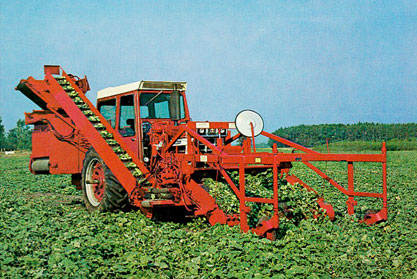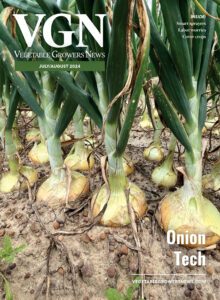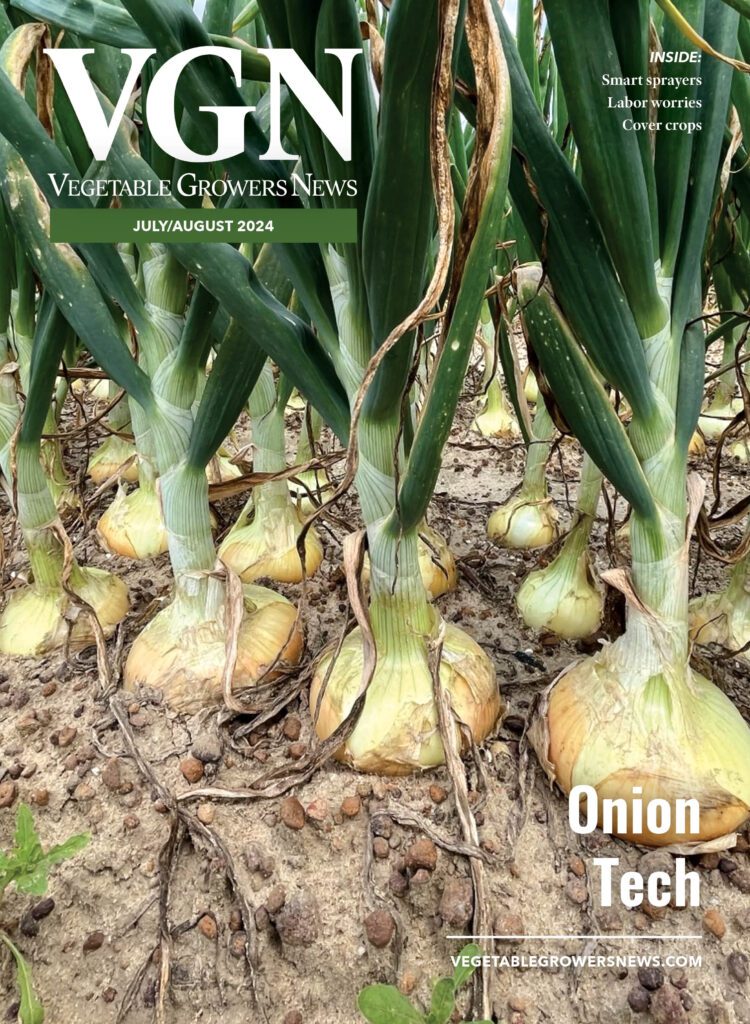
Jun 16, 2011ASABE awards pickle harvester designers
It might surprise people to know that Michigan State University (MSU) played a role in getting those pickles into the jars in their refrigerators.
In the 1950s, the expense of hand-harvesting cucumbers was as much as 50 percent of the production cost. When the H.J. Heinz Co. asked if MSU could come up with a solution, it was clear they were up to the challenge.
MSU scientists shunned the conventional methods of the ’50s, which focused on trying to develop a multi-pick machine. They wanted to develop a once-over cucumber harvester.
“Everybody laughed at us, but we convinced ourselves that the once-over cucumber picker could work,” said Bill Stout, who at the time was an MSU professor in the Department of Biosystems and Agricultural Engineering.
Stout worked with then-graduate student and now professor Max DeLong and Stan Ries, professor in the Department of Horticulture, on a solution that would change not only the way cucumbers were harvested, but grown as well.
Ries thought that planting more cucumber plants per acre would help the harvester work more efficiently.
“That was a radical thought, but we changed the way that cucumbers are grown and harvested,” Stout said.
It was truly a landmark in American agriculture, said Ajit Srivastava, chairperson of the Department of Biosystems and Agricultural Engineering.
“The partnership between industry and academia in the 1960s resulted in the invention of a once-over cucumber harvester, now the predominant machine used in harvesting for pickle production,” he said. “And, today, we enjoy the same types of partnerships with industry.”
In April, the American Society of Agricultural and Biological Engineers (ASABE) recognized the trio with a commemorative plaque. The plaque was unveiled April 21 in the second floor lobby of Farrall Hall at MSU.
Dale Marshall, a former member of the ASABE Historical Commemoration committee, nominated the invention “because it was worthy.”
As an undergraduate, Marshall worked with Stout. Later, Marshall became involved with ASABE and inherited a collection of black and white photographs and other memorabilia.
“For 10 years, I’ve known that this really was important, but I just had to dig deep. We finally have been able to pull it off,” Marshall said.
Biosystems engineering seniors complete capstone design projects putting problem-solving skills to the test of a real industry problem. An industry advisory board keeps the department abreast of the latest industry needs, and robust alumni relations keep the progress going.
In the last five years, enrollment in the department has doubled, and it boasts a 100 percent placement for students after graduation.
“We look forward to the day, in another 50 years, when we are recognizing our current students following in the footsteps of Drs. Stout, Ries and DeLong,” Srivastava said.
By Eileen Gianiodis, Michigan State University














